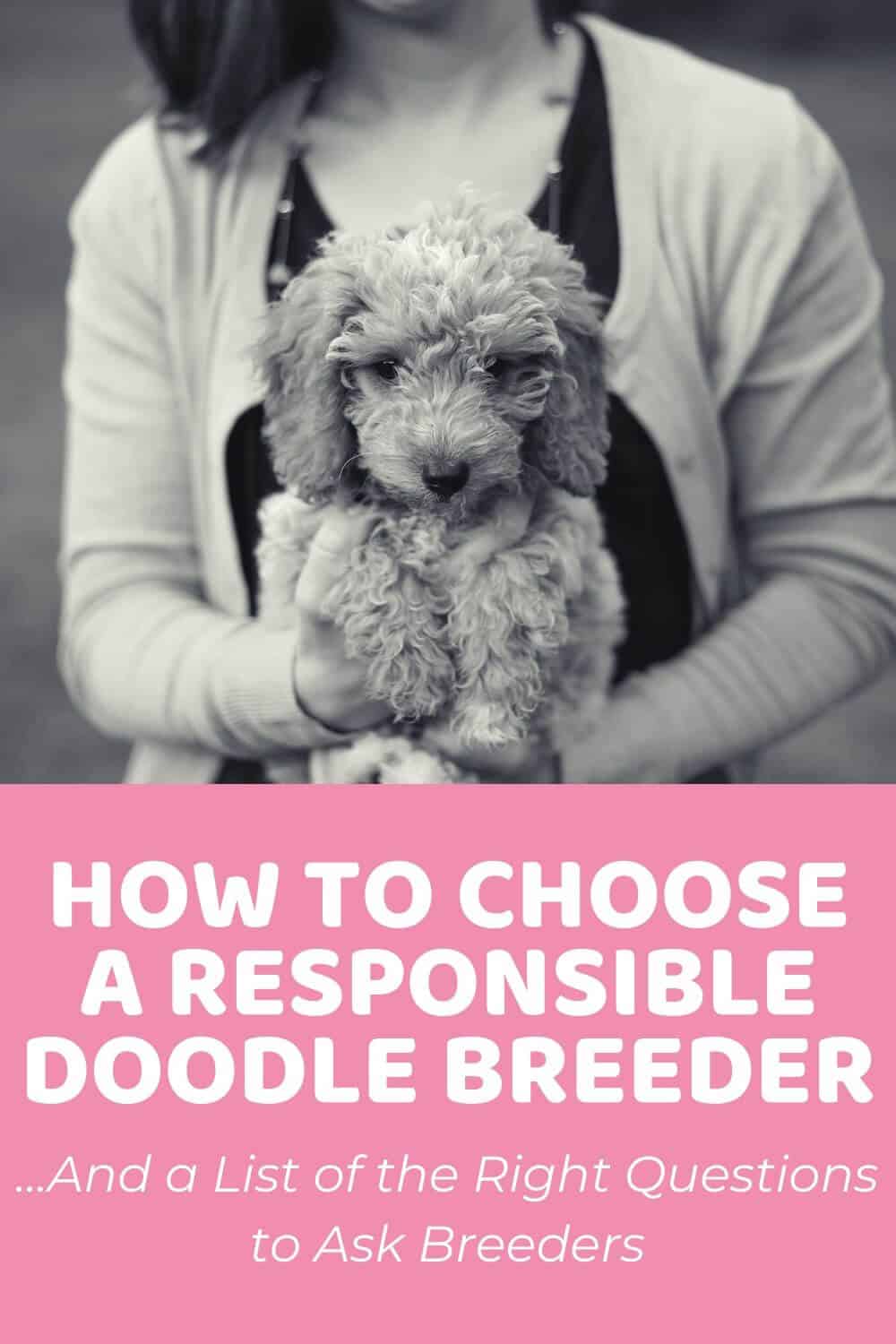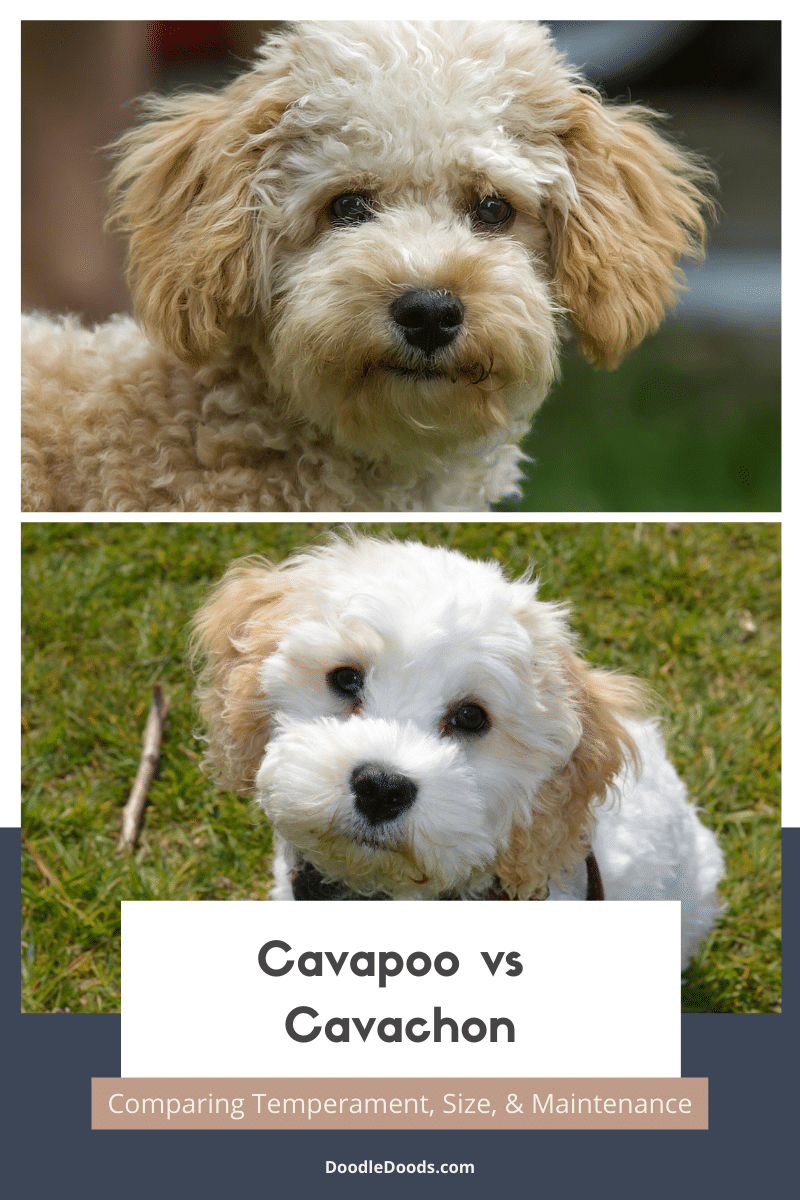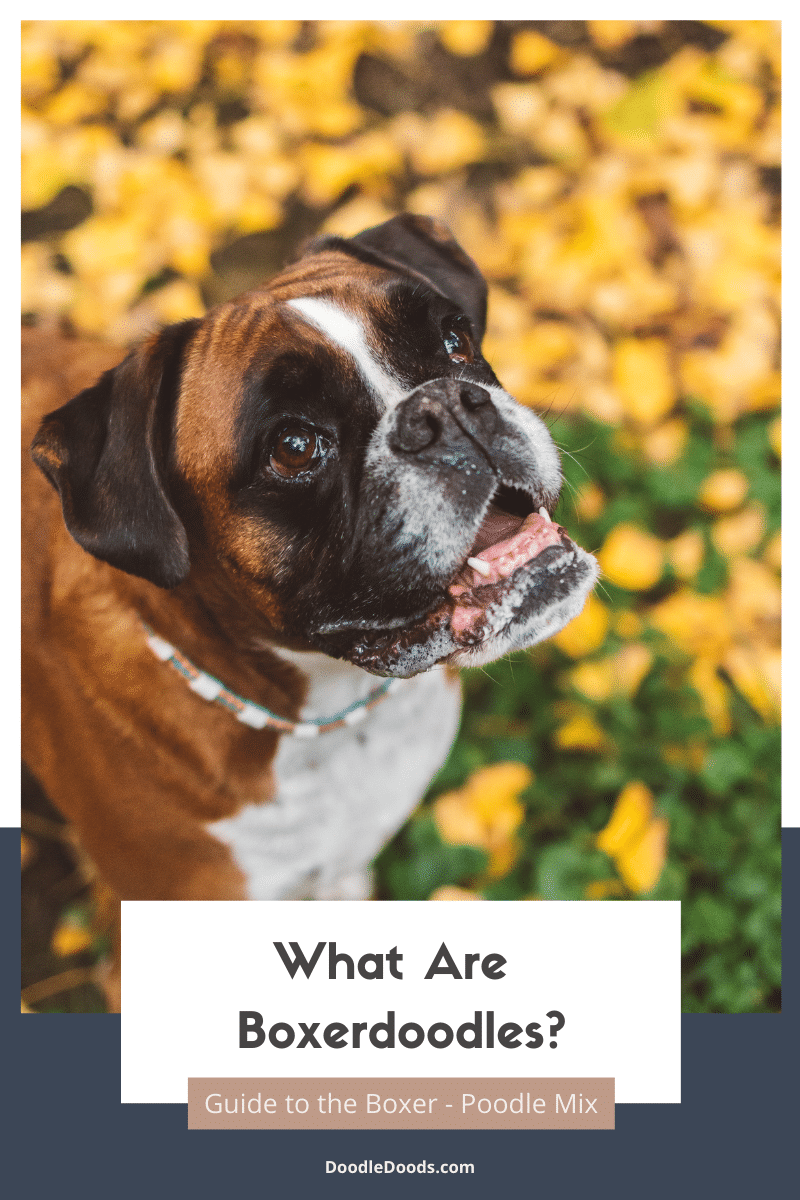Schnoodle is one of the Doodle breeds that’s been around for quite some time, and we don’t see them going anywhere! In this article, we’re going to discuss everything about the Schnoodle Doodle – their appearance, size, personality, health, grooming, and more. Let’s dig in!
Learn How to Care for Your Doodle Puppy!

Perfect for first-time Doodle parents, get ALL your questions answered, including questions new Doodle parents don’t even think to ask.
Plus, get $700 worth of Bonus Materials for FREE, including:- Doodle Parenthood Community and Support Group ($190 value)
- Doodle Puppy Growth Tracker ($20 value)
- EMERGENCY Cheatsheet: When To Call The Vet Immediately ($50 value)
- HELP! Button ($145 value)
- And SO MUCH MORE!
What Is A Schnoodle?
A Schnauzer-Poodle mix, the Schnoodle combines the two sweetest and most intelligent breeds. This hybrid breed is known for its loyalty, high energy levels, gentle and loving nature, and the signature Doodle looks and Schnauzer beard.

Schnoodles have been around since the 1980s and their popularity has been on the rise ever since. Although they’re not as famous as their Goldendoodle or Labradoodle relatives, Schnoodles have certainly established a following amongst countless dog lovers.
As both the Schnauzer and Poodle come in all different sizes, there’s a Schnoodle for everyone. If you’re after a tiny, fun-sized pup, you might find a Mini or Toy Schnoodle most suitable. If you’re thinking of adopting a large dog, you might want to look into a Standard or Giant Schnoodle.
Schnoodle Physical Appearance
Color
The Schnauzer-Poodle mix can flaunt a variety of colors, patterns, and color combinations. The most common colors in Schnoodles are solid black, white, cream, apricot, and brown/chocolate. Additionally, you may come across other colors like red, tan, gray, black and white combination coats, black and tan, salt and pepper, parti, merle, sable, and phantom.
Coat, Shedding, & Hypoallergenic Level
Schnoodles, like other Doodles, are praised for their low-shedding and allergy-friendly coats. They’re typically soft to touch and can vary from wavy to curly. However, as some Schnauzers come with a wiry coat, it can be passed on to the Schnoodle offspring. Curly coat Schnoodles usually have less curl in their hair than the Poodle parent. Schnoodles with wavy and wiry coats also tend to exhibit less of the Schnauzer wiriness.
What’s more, as Schnauzers come with a double coat, we can expect some shedding. Nonetheless, as both Poodles and Schnauzers are generally low-shedders, we can expect a Schnoodle pup to shed minimally as well.
Schnoodle Pictures
We can keep talking on and on about the physical appearance of the Schnauzer Poodle mix, but as we all know, pictures speak louder than words. Here are some adorable Schnoodle puppies and adults that have won our hearts:
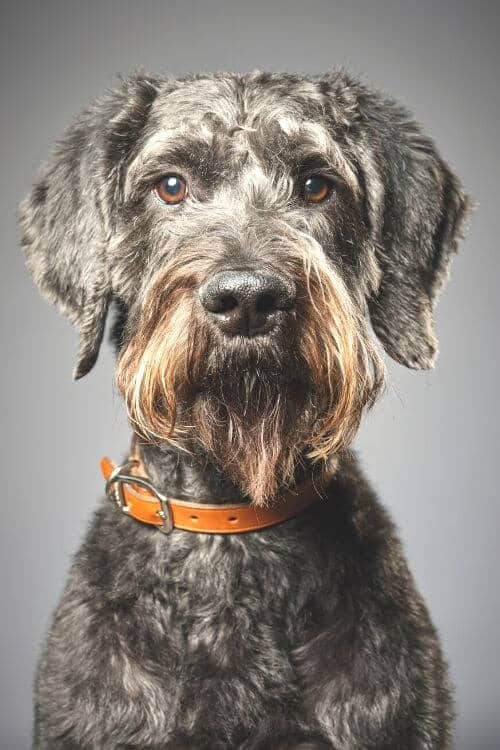
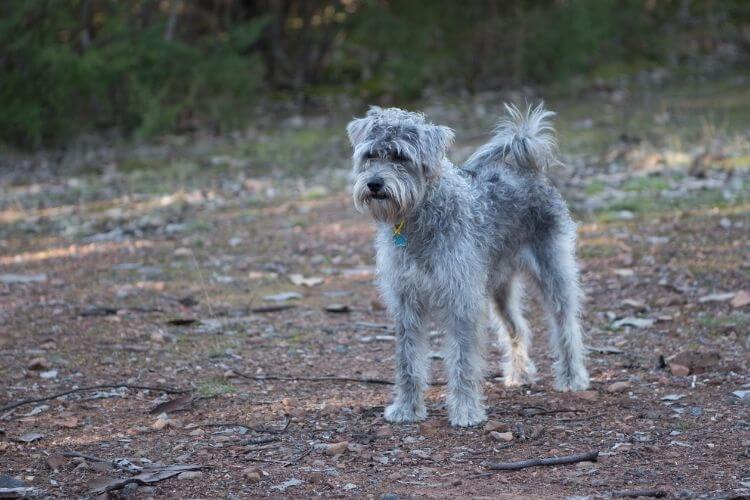
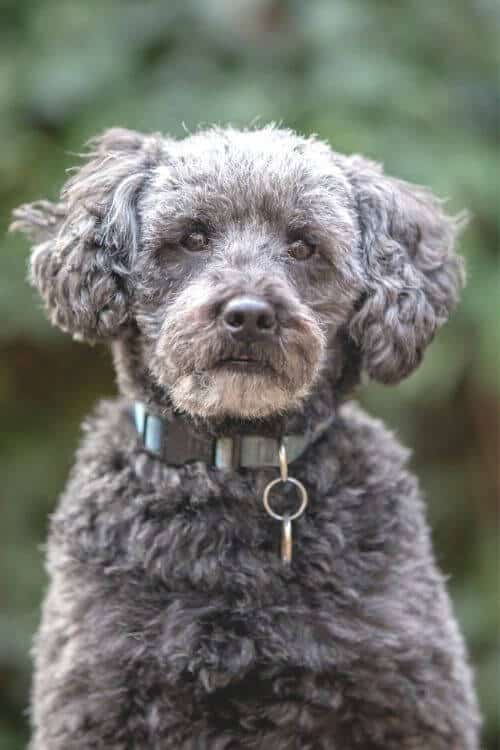
Schnoodle Size
How big will a Schnoodle get? Are there different sizes of Schnoodle? The Schnauzer-Poodle mix can come in a variety of sizes. That’s down to the fact that both the Poodle and Schnauzer come in three different sizes. The Poodle comes in Toy, Miniature, and Standard size, whereas the Schnauzer comes in Miniature, Standard, and Giant size. As a result, we can get Schnoodles in all different shapes and sizes. Let’s take a closer look…
| Toy Schnoodle | Miniature Schnoodle | Standard Schnoodle | Giant Schnoodle | |
| Weight | 4-10 pounds | 10-20 pounds | 20-60 pounds | 60-85 pounds |
| Height* | 10-12 inches | 12-15 inches | 15-20 inches | 20-28 inches |
| Age at Adult Size | 6-7 months | 7-10 months | 12-18 months | 12-24 months |
As you can see, some Schnoodles can weigh as little as 4 pounds, while the largest of them can weigh up to 85 pounds! Depending on their size, Schnoodle puppies can reach their full adult size as young as 6 months old, while some pups might take up to two years to fully mature. For instance, a Standard Schnoodle who weighs between 20 and 60 pounds will usually reach its full adult size around 12 and 18 months old. Meanwhile, a Toy Schnoodle who weighs only 4 to 10 pounds typically reaches its adult size around 6 or 7 months old.
Another thing worth mentioning is that although you’ll be able to find Schnoodles in all sizes, they’re most commonly bred as smaller dogs. The most common variations are either a mix of the Toy Poodle and Miniature Schnauzer or a Miniature Poodle and Mini Schnauzer.
We recommend you check out our Schnoodle size guide, where we talk more in-depth about the different sizes and growth patterns of the Schnauzer-Poodle mix.
Mini Schnoodle
Mini Schnoodles are the most popular variation of the Schnauzer-Poodle mix. If the goal is to achieve Mini Schnoodles, a Toy or Miniature Poodle is crossed with a Miniature Schnauzer. Additionally, if you’re after a smaller Schnoodle with curlier hair, an F1 or F2 Mini Schnoodle can be backcrossed to a Miniature or Toy Poodle.
Schnoodle Personality & Temperament
Is a Schnoodle a good family dog? Are Schnoodles aggressive? Schnoodles are great family dogs, as they’re extremely loyal, loving, and affectionate. They’re playful and fun-loving, and enjoy being part of your everyday activities. They get along well with children and other pets thanks to their gentle nature.
They also tend to be very active and energetic. In addition to that, they’ve inherited high intelligence levels and eagerness to please from both of the parent pups, making them easy to train. On the other hand, this also means that Schnoodles need plenty of mental and physical stimulation to prevent behavioral problems.
Of course, it’s important to keep in mind that all Schnoodle puppies should be introduced to training and socialization as soon as you bring them home. This ensures that your pup gets to grow into a well-behaved and well-rounded adult. From the Schnauzer parent, Schnoodles can inherit stubbornness, which is more prevalent in larger pups like the Giant Schnoodle. They can also be wary of strangers and bark excessively, if not trained and socialized properly.
Schnoodle Variations & Generations
As we know, there are many possible variations of Schnoodles, as we can combine the different sizes of Poodles and Schnauzers. But it doesn’t stop there. There are also Schnoodle generations, which give us endless possibilities when combining the two purebred dogs. Let’s take a look at what each generation represents:
| 1st Parent | 2nd Parent | % Schnauzer* | % Poodle* | |
| F1 Schnoodle (first-generation) | Schnauzer | Poodle | 50% | 50% |
| F1B Schnoodle (first-generation backcross) | F1 Schnoodle | Poodle | 25% | 75% |
| F1BB Schnoodle (first-generation backcross backcross) | F1B Schnoodle | Poodle | 12.5% | 87.5% |
| F2 Schnoodle (second-generation) | F1 Schnoodle | F1 Schnoodle | 50% | 50% |
| F2B Schnoodle (second-generation backcross) | F1 Schnoodle | F1B Schnoodle | 37.5% | 62.5% |
| F2B Schnoodle (alternate cross) | F2 Schnoodle | Poodle | 25% | 75% |
| F3 / Multigen Schnoodle | F1B Schnoodle or higher | F1B Schnoodle or higher | Varies | Varies |

Schnoodle Health & Life Expectancy
What health problems do Schnoodles have? How long do Schnoodles live? Schnoodles are considered healthy dogs with an average lifespan of 12 to 16 years. But just like any other breed, there are some health problems and hereditary diseases that they are at a higher risk of. These include:
- Hip and elbow dysplasia
- Patellar luxation
- Addison’s disease
- Progressive retinal atrophy
- Gastric torsion, also known as bloat
- Allergies and sensitivities
- Ear infections
What’s great about Doodles is that thanks to hybrid vigor they are generally healthier than their purebred parents. However, the only way to rule out hereditary diseases is by health testing. Responsible breeders rigorously test the parent dogs for any genetic defects and health problems before producing new litters. Although breeders can do everything on their part to make sure the new Schnoodle puppies are healthy, it’s up to the owner to provide the pup a healthy and balanced diet, plenty of exercise, and a safe living environment, which all contribute to a healthy and happy dog.
Schnoodle Exercise & Training
Are Schnoodles easy to train? How much exercise do Schnoodles need? The Schnauzer Poodle mix is an active and energetic breed. You should aim for at least 30 to 60 minutes of exercise daily, if not more. As they’re super fun-loving, don’t forget to set aside plenty of time for playing fetch and other fun activities in your backyard or local dog park.
Schnoodle puppies are generally easy to train, as they’ve inherited their smarts from both the Schnauzer and Poodle parents. It’s not uncommon for some to even become a little bit feisty, but with proper training and socialization that shouldn’t be much of a problem. As we mentioned earlier, with Schnoodles it’s important you have the time and energy to provide them plenty of mental and physical stimulation to avoid behavioral problems like becoming destructive.
For Schnoodles, we recommend the Online Puppy School by Baxter & Bella, which is one of the most comprehensive training programs we’ve come across. Their online puppy school comes with a lifetime access and includes all the resources you will need to successfully raise your Schnoodle puppy into a well-rounded adult.
Need help with training?
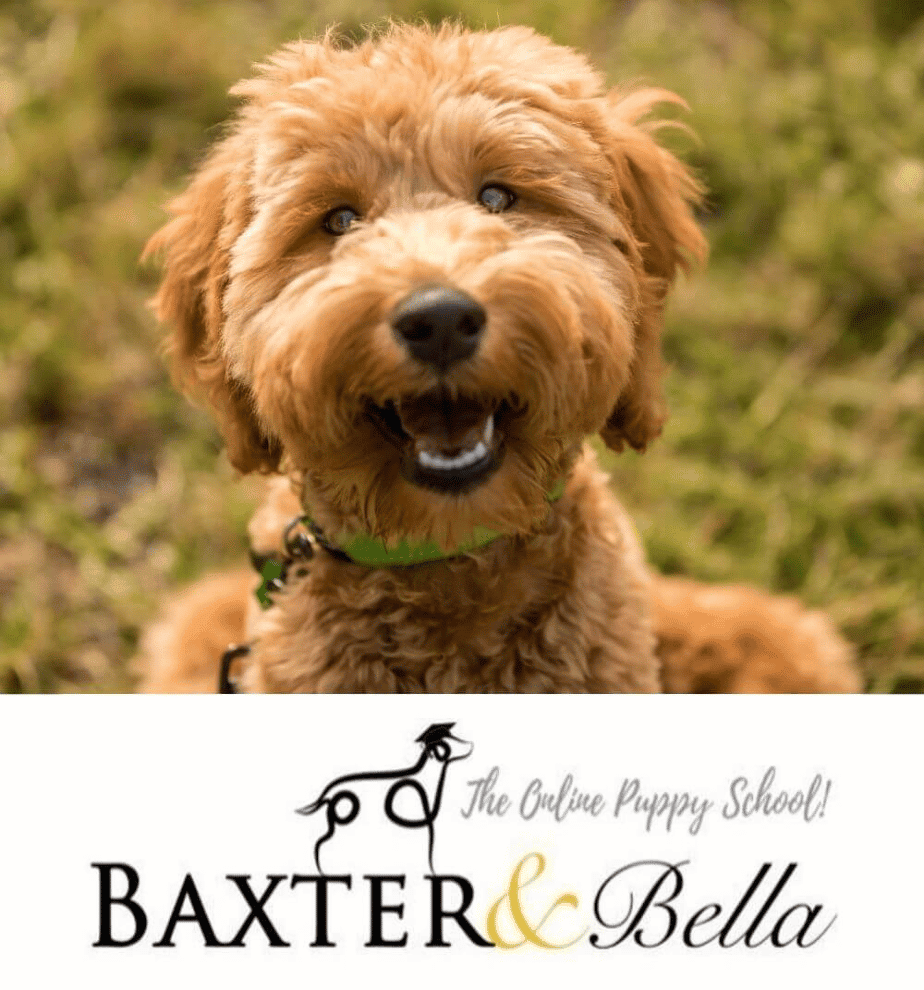
Use our discount code: DOODLEDOODS at checkout for an instant 25% off of BAXTER & BELLA, The Online Puppy School – an incredible value on their lifetime membership!
Learn More About BAXTER & BELLASchnoodle Coat & Grooming
Do Schnoodles shed? Are Schnoodles high maintenance? Although the Schnauzer-Poodle mix is praised for its hypoallergenic coat, there’s no such thing as a 100% hypoallergenic dog. But they do come pretty close! Even Schnoodles with a double coat tend to shed very little, just like their Schnauzer parent.
Like other Doodles, the beautiful low-shedding Schnoodle coat comes at a cost. In terms of daily maintenance, brushing is a necessity to keep that coat looking beautiful and fresh. As Schnoodles are prone to matting, it’s especially important to stay on top of their grooming routine. Not only does matted hair look dull, severe matting can also cause skin irritation, dryness, and even infections.
We recommend brushing the Schnauzer-Poodle mix every day, as this is the best way to prevent the knots and tangles from forming into mats. In case you’ve missed a few days (or more) of brushing, you might need to give your pup some special treatment.
Other steps in a Schnoodle’s grooming routine include:
- Hair trimming every 6-12 weeks. See also: How to Groom a Doodle At Home: Online Course
- Bathing before every haircut or when your pup gets smelly and dirty. See also: How To Bathe A Dog: Ultimate Guide To Bathing Doodles
- Nail trimming every 1-2 weeks. See also: How To Trim Dog Nails: Ultimate Guide!
- Ear cleaning and drying after every swim and bathtime. See also: Dog Ear Infection Symptoms, Treatments, And Prevention In Doodles.
- Teeth brushing daily or at least a few times a week. See also: How To Brush Your Dog’s Teeth At Home
- Cleaning the eyes from eye gunk and boogers daily. See also: Beard & Tear Stains In Doodles: Causes & Best Tear Stain Remover
Where Can You Get Schnoodle Puppies?
Where can you adopt a Schnoodle puppy? How much does a Schnoodle cost? Like other Doodles, Schnoodles are very in-demand and that also reflects on their price and availability. Schnoodle puppies can cost anywhere between $2000 and $5000, depending on their size, generation, coat types, and your location. The typical price range sits between $2000 and $3000.
Of course, purchasing a puppy from a reputable breeder is not cheap. However, it’s well worth the price tag, as responsible breeders conduct extensive health testing to breed healthy new litters. We urge you to avoid puppy mills and breeders who do not follow the same high standards of producing new litters, as oftentimes the parents and dogs are kept in terrible conditions and struggle with a wide range of health problems.
If you’re planning to adopt a Schnoodle puppy, make sure you check out our Doodle Breeders Directory, where you’ll be able to find a list of reputable Schnoodle breeders in the United States.
Schnoodle FAQ
Do Schnoodles Make Good Pets?
Schnoodles make great pets for families and singles alike. They’re fun-loving and active pups who really enjoy spending time around their humans. As they’re affectionate, they tend to bond with their families very easily. What’s more, thanks to their gentle and loving nature, they get along well with children and pets. On the other hand, Schnoodles can sometimes bark excessively or exhibit their stubbornness.
Who Is A Schnoodle Best For?
Schnoodles are great companions for active owners, regardless if it’s a family of one or five. Schnoodles love being a part of the everyday action and will gladly join you on your many adventures. They are generally easy to train thanks to their high intelligence levels. However, the larger the Schnoodle, the more stubborn they might be. Therefore, we do recommend Standard and Giant Schnoodles for people who already have experience with dogs.
To conclude, Schnoodles are great dogs for almost anyone, as there are so many varieties and sizes to choose from! We hope you learned some interesting facts about this adorable hybrid breed, so you can make an informed decision before bringing your new four-legged family member home.



